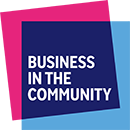Gender Pay Toolkits
Each document in the suite of five toolkits is to designed to support your organisation in achieving gender pay parity. The toolkits take you on a journey from understanding your pay gap to equalising the earnings of men and women to retain talent and ensure fair progression processes across your organisation.
- Toolkit 1: Understanding your gender pay gap.
This document helps you understand your gender pay gap by outlining what data to report, who the regulations apply to, how to calculate the data, and when and where it should be published. It also sets out how Business in the Community (BITC) can support you through the reporting process, whichever stage you are at, and provides links to valuable resources.
- Toolkit 2: Analysing your gender pay gap.
Now your organisation has calculated your gender pay gap, you can explore the data in more detail. Why do women earn, on average less than men and what is driving your gender pay gap? The toolkit asks ten questions to help you identify the issues behind the gender pay gap in your organisation. You will gain a deeper understanding of the cultural and organisational barriers to women’s progression, leading to their lower earning potential. Once you understand what is driving your organisation’s gender pay gap, you will be much better prepared for public reporting.
- Toolkit 3: Communicating your gender pay gap.
Your organisation has calculated its gender pay gap and identified the biggest causes, now it is time to publish. How will you communicate this internally and externally to everyone, from your employees to the media? The third toolkit in the Business in the Community (BITC) gender pay gap reporting series offers guidance on communicating your pay gap internally and externally, where to publish it and, crucially, how to write your accompanying narrative.
- Toolkit 4: Tackling your gender pay gap – attraction and recruitment.
Guidance and best practice on equalising the earnings and positions of women and men in your organisation to help with tackling gender pay gaps. This toolkit asks how you attract and recruit staff, considering how recruitment targets, adverts, shortlisting and interviewing processes can be made bias-proof. It also asks companies to take an intersectional approach to equality and inclusion to enable employers more significant change faster.
- Toolkit 5: Tackling your gender pay gap – retention and progression.
Guidance and best practice on equalising the earnings and positions of women and men in your organisation, to help with tackling gender pay gaps. The last toolkit in Business in the Community’s (BITC) gender pay gap series looks at how to retain talent and ensure fair progression processes across your organisation. You will need to consider your workplace culture, inclusive leadership, bullying and harassment, and appraisals and promotions.
Business in the Community’s work on diversity and inclusion.
Business in the Community’s (BITC) is working to ensure all employees feel they belong, have a voice, are valued and can be their true selves. We have three diversity and inclusion strands; age, gender equality and race equality.
- BITC works with employers to respond effectively to the ageing population and the needs of older workers and to leverage the benefits of effective intergenerational working.
- We support organisations to achieve a gender-balanced workforce where employers recruit and progress the best talent, irrespective of gender.
- For over 25 years, BITC has been campaigning and helping organisations to ensure ethnic minority employees are represented at all levels.
Diversity and inclusion (D&I) is part of BITC’s Responsible Business Map
Next step: contact Business in the Community’s Advisory Service Team
Business in the Community’s (BITC) diversity and inclusion advisory service has years of experience in creating lasting change.
We are passionate about increasing levels of diversity and inclusion within organisations of all sectors and sizes. Our advisers understand your challenges and will support you in creating workplaces where everyone can thrive.
Contact our Advisory Service Team to find out more.
